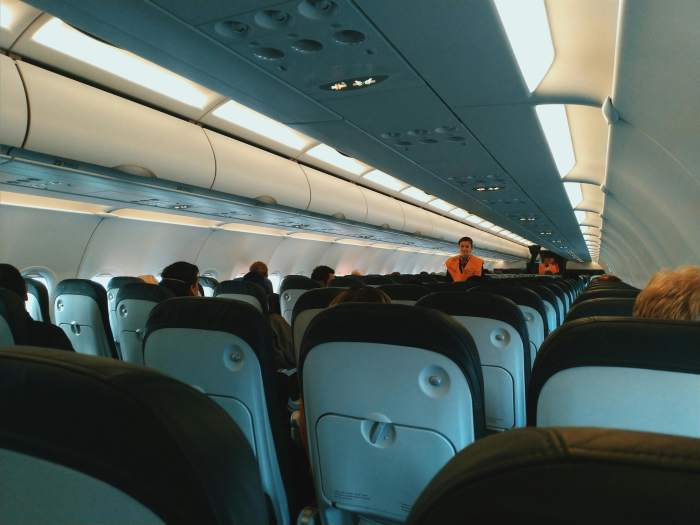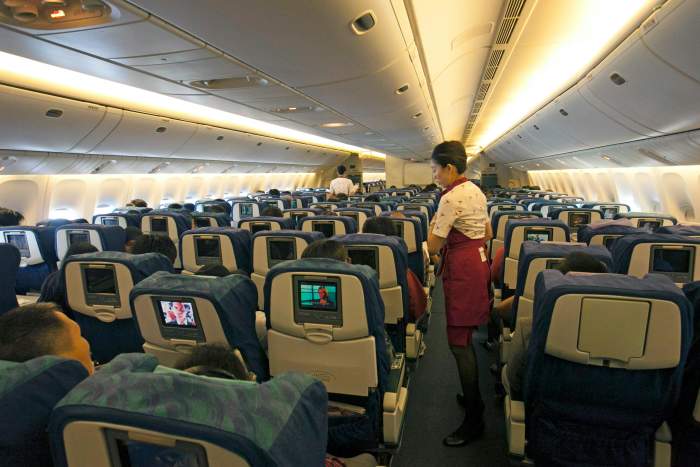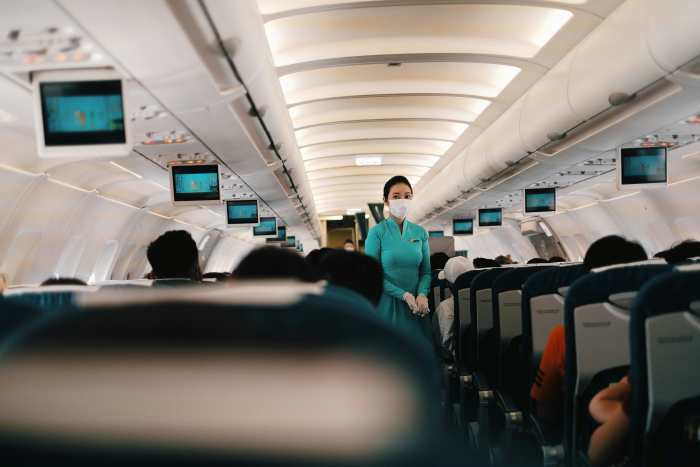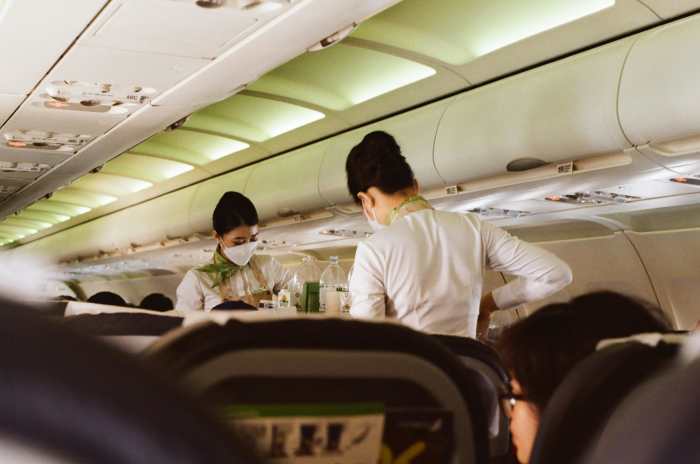If you’ve ever glanced at a flight attendant during takeoff or landing and noticed them sitting upright with hands tucked under their thighs, you might have wondered: what exactly are they doing?
While some might assume it’s a quirky habit or a way to stay warm in chilly cabins, the real reason is far more serious — and rooted in safety protocols designed to save lives.

Cabin of aircraft with passengers on board, Photo Credit: Pexels
Flight crews around the world are trained to adopt what’s called the brace position during the most critical parts of a flight: takeoff and landing. These are the moments when the likelihood of an emergency is highest. And no, the posture isn’t just for passengers.
Flight attendant Henny Lim, who works for Cebu Pacific Airlines in the Philippines, recently shared the truth behind this position with PEOPLE, shedding light on a routine most passengers never fully understand. According to Lim, the sitting-on-hands posture is a crucial safety measure aimed at reducing injury in the event of a sudden impact.

Flight Attendant working while in flight, Photo Credit: Pexels
“The idea is to keep the body locked in a strong, controlled pose so that if we hit turbulence or experience an unplanned emergency, the risk of injury is minimized,” Lim explained. By placing their palms upward and tucking their hands beneath their thighs, flight attendants restrict unnecessary movement of the arms, which could otherwise be injured or thrown around during a collision.
The position also involves sitting completely upright, keeping the spine aligned, and planting both feet firmly on the cabin floor — all to help stabilize the body and brace against potential shocks.

A Flight Attendant Standing in the Cabin, Photo Credit: Pexels
Another industry professional, flight attendant Anusha Pratima, echoed this explanation in a Quora discussion. She emphasized that during taxiing, takeoff, and landing, cabin crew must stay hyper-aware and ready to respond immediately to emergencies. She explained that the brace position helps restrict limb and spine movement, lowering the risk of serious injury during impact.
Surprisingly, passengers are advised to use a different brace method in the event of an in-flight emergency. According to aviation resource Simple Flying, passengers should “lean the upper body forward, rest the head against the seat in front, and place hands flat on either side of the head.” This forward-leaning posture offers the best protection for non-crew members.

Flight Attendants Standing in the Aisle of an Airplane, Photo Credit: Pexels
So next time you’re buckled up and your flight attendant takes that curious seated position, know this — it’s not habit. It’s a life-saving technique rooted in years of safety training. And it could make all the difference when seconds count





